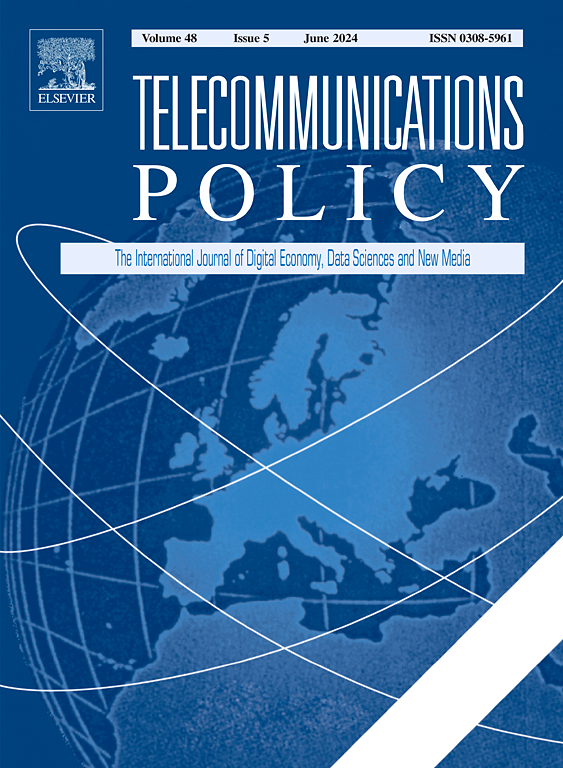Impacts of the USDA Community Connect broadband program on broadband speeds in rural areas
IF 6.4
2区 管理学
Q1 COMMUNICATION
引用次数: 0
Abstract
This study investigates the impacts of 23 USDA Community Connect grant projects approved in fiscal years 2017–2019 on measured broadband download and upload speeds during 2019–2022 using program data, Ookla Speedtest® data, and other data. We combine matching and difference-in-difference regressions to estimate causal impacts, using ordinary least squres and two alternative estimators - the Heckman model and extremal quantile regression - to address potential sample selection bias. We find that these projects had a positive impact on upload speed but not download speed, increasing upload speeds in project areas in the preferred extremal quantile regression model using the Mahalanobis matched sample by an average of about 28 percent across the study periods. Our qualitative findings are robust to variations in the study sample, regression model, inclusion of high-dimensional fixed effects or random intercepts and coefficients, and other variations. We find larger impacts on upload speed of projects that supported fiber-to-the-household than other projects and larger impacts in some geographic regions. Based on the preferred model results, we estimate that the program cost of increasing measured upload speed through these Community Connect projects averaged about $1300 per Mbps per household.
美国农业部社区连接宽带项目对农村地区宽带速度的影响
本研究使用项目数据、Ookla Speedtest®数据和其他数据,调查了2017-2019财政年度批准的23个美国农业部社区连接拨款项目对2019-2022年测量宽带下载和上传速度的影响。我们结合匹配和差中差回归来估计因果影响,使用普通最小二乘法和两个替代估计器- Heckman模型和极值分位数回归-来解决潜在的样本选择偏差。我们发现,这些项目对上传速度有积极影响,但对下载速度没有积极影响,在使用马氏匹配样本的首选极值分位数回归模型中,项目区域的上传速度在研究期间平均提高了约28%。我们的定性研究结果对于研究样本、回归模型、包含高维固定效应或随机截距和系数以及其他变化的变化是稳健的。我们发现,与其他项目相比,支持光纤入户的项目对上传速度的影响更大,在某些地理区域的影响更大。根据首选的模型结果,我们估计通过这些社区连接项目提高测量上传速度的计划成本平均为每个家庭每Mbps 1300美元。
本文章由计算机程序翻译,如有差异,请以英文原文为准。
求助全文
约1分钟内获得全文
求助全文
来源期刊

Telecommunications Policy
工程技术-电信学
CiteScore
10.80
自引率
12.50%
发文量
122
审稿时长
38 days
期刊介绍:
Telecommunications Policy is concerned with the impact of digitalization in the economy and society. The journal is multidisciplinary, encompassing conceptual, theoretical and empirical studies, quantitative as well as qualitative. The scope includes policy, regulation, and governance; big data, artificial intelligence and data science; new and traditional sectors encompassing new media and the platform economy; management, entrepreneurship, innovation and use. Contributions may explore these topics at national, regional and international levels, including issues confronting both developed and developing countries. The papers accepted by the journal meet high standards of analytical rigor and policy relevance.
 求助内容:
求助内容: 应助结果提醒方式:
应助结果提醒方式:


